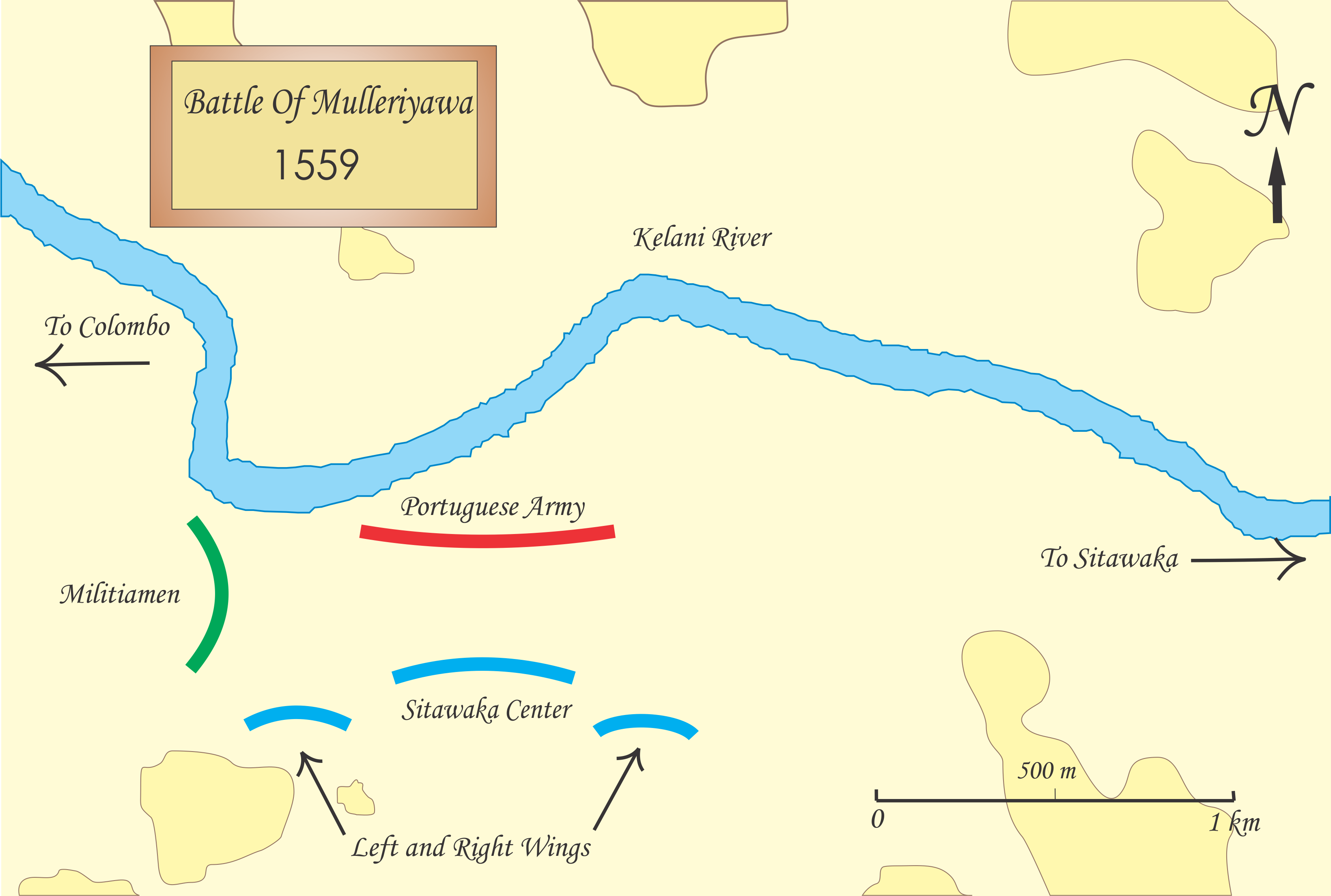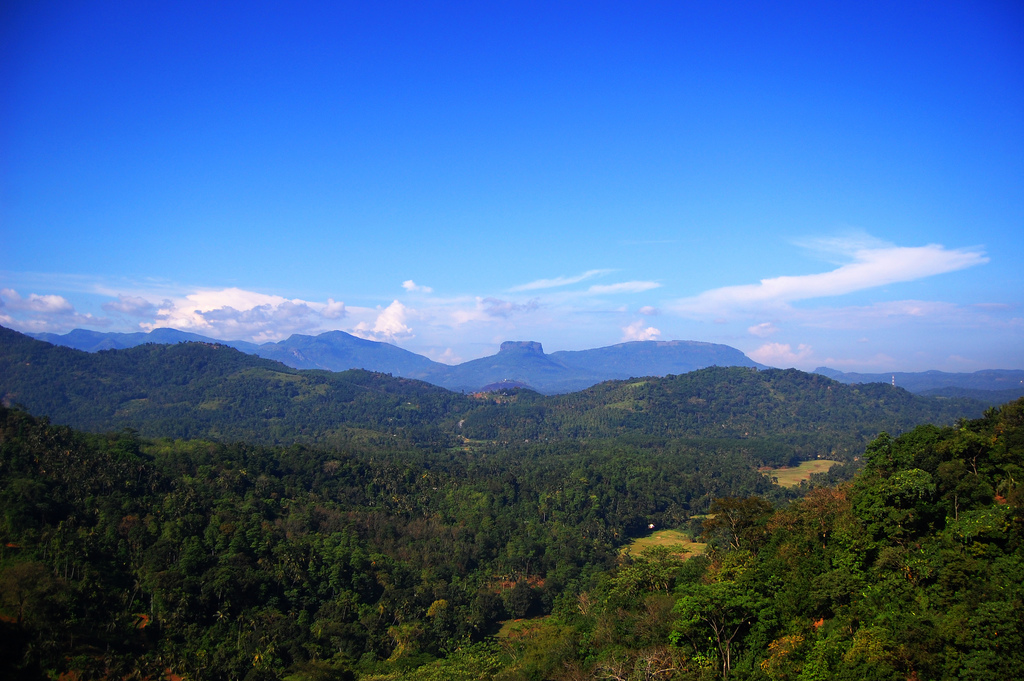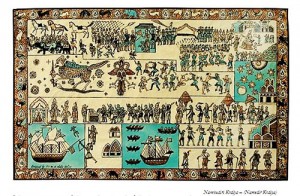|
Rajasinha I Of Sitawaka
Rajasinghe I ( Sinhala:පළමුවන රාජසිංහ) was a king of Sitawaka, known for his patriotism and fight against the Portuguese invasion of Sri Lanka. Born as Tikiri Bandara to King Mayadunne, he received the name "Rajasinha" (meaning ''the Lion King'') after the fierce Battle of Mulleriyawa. Ascent to throne Generally, the recorded period of Rajasinha's reign starts from 1581 to 1592. However, as per Portuguese navigator De Queros, Mayadunne had turned the kingdom over to Rajasinha in 1578 before his death in 1581. There are various narratives surrounding Rajasinha's role in his father's death. As per Thibbotuwawe Buddharakhitha's Mahawamsa(Chapter 4) written during the reign of Kirti Sri Rajasinha of Kandy, Rajasinha killed him. Minor Rajawaliya wrote that his patricide was considered an irreversible anantharya karma by Buddhist monks, so conflicts arose between him and the monks. As a result, he followed an anti-Buddhist line. However, others believe t ... [...More Info...] [...Related Items...] OR: [Wikipedia] [Google] [Baidu] |
Kingdom Of Sitawaka
The Kingdom of Sitawaka ( si, සීතාවක, ta, சீீீதாவாக்கை இராசதானி) was a kingdom located in south-central Sri Lanka. It emerged from the division of the Kingdom of Kotte following the Spoiling of Vijayabahu in 1521. Over the course of the next seventy years it came to dominate much of the island. Sitawaka also offered fierce resistance to the Portuguese, who had arrived on the island in 1505. Despite its military successes, Sitawaka remained unstable, having to contend with repeated uprisings in its restive Kandyan territories, as well as a wide-ranging and often devastating conflict with the Portuguese. Sitawaka disintegrated soon after the death of its last king Rajasimha I in 1593. History Foundation The Kingdom of Kotte had been the major power in western Sri Lanka since its foundation in the early 15th century; under Parakaramabahu VI, the polity has been the last to unite the entirety of the island of Sri Lanka under ... [...More Info...] [...Related Items...] OR: [Wikipedia] [Google] [Baidu] |
Sengkadagala
Kandy ( si, මහනුවර ''Mahanuwara'', ; ta, கண்டி Kandy, ) is a major city in Sri Lanka located in the Central Province. It was the last capital of the ancient kings' era of Sri Lanka. The city lies in the midst of hills in the Kandy plateau, which crosses an area of tropical plantations, mainly tea. Kandy is both an administrative and religious city and is also the capital of the Central Province. Kandy is the home of the Temple of the Tooth Relic ('' Sri Dalada Maligawa''), one of the most sacred places of worship in the Buddhist world. It was declared a world heritage site by UNESCO in 1988. Historically the local Buddhist rulers resisted Portuguese, Dutch, and British colonial expansion and occupation. Etymology The city and the region have been known by many different names and versions of those names. Some scholars suggest that the original name of Kandy was Katubulu Nuwara located near the present Watapuluwa. However, the more popular historical ... [...More Info...] [...Related Items...] OR: [Wikipedia] [Google] [Baidu] |
Hiti Imbule Bodiraja Perumal
Hiti, or Hiti-rau-mea, is a small atoll of the Tuamotu Archipelago in French Polynesia. It is located 19 km southwest of Makemo Atoll. Hiti Atoll is oval in shape. It measures 9 km in length with a maximum width of 6 km. There are some narrow islands on the northern side of its reef with a total land area of about 3 km2. The southern part of the reef is broader but has no islands. Hiti's lagoon is not connected to the ocean by a pass. The small group formed by Hiti, Tepoto Sud and Tuanake is also known as the "Raevski Atolls". The Tuamotu reed warbler and the Polynesian ground dove are found in this area. Hiti Atoll is permanently uninhabited. History The first recorded European to arrive to Hiti Atoll was Russian oceanic explorer Fabian Gottlieb von Bellingshausen in 1820. Administration Hiti belongs to the commune of Makemo, which consists of the atolls of Makemo, Haraiki, Marutea Nord, Katiu, Tuanake, Hiti, Tepoto Sud, Raroia, Takume, Taenga and Nihiru. ... [...More Info...] [...Related Items...] OR: [Wikipedia] [Google] [Baidu] |
Maggona Arachchi
Maggona Arachchi ( also Maggonage, Maggona ge) is a Sinhalese speaking Khandayat ethnic group of Sri Lanka. The House of Kaikesi Irugal migrated from Odisha in the 13th Century, claiming lineage to the Yadava royalty in the Kingdom of Kalinga in Eastern India. They are probably related to Khandayat people. History Maggona Arachchis are former Yadava people who lived in ancient Kalinga. They were a warrior caste known as Khandayat. After the Ashoka Empire conquered Kalinga, Yadava's Khandayats embraced Buddhism. They arrived in the time of the Kingdom of Gampola from Odisha. They came with the Tamil Nadu Madurai - Kanchipuram Alagakkonara Family - අලගක්කෝනාර පවුල to fight the Vijayanagara Empire and Jaffna as mentioned in Alakeshvara Yuddaya. Once Minister Nissanka Alagakkonara got enough power at Gampola royal court, he influenced the royal court to arrange the southern fort to protect the Kotte Fort at Maggona and appointed Maggona Arachchi ... [...More Info...] [...Related Items...] OR: [Wikipedia] [Google] [Baidu] |
Sitawaka Fort
Sitawaka fort ( si, සීතාවක බලකොටුව, translit=Sitawaka Balakotuwa; ta, சீதவாக்கைக் கோட்டை, translit=Cītavākkaik Kōṭṭai), was built by the Sitawaka kingdom in Avissawella Avissawella, ( si, අවිස්සාවේල්ල, ta, அவிசாவளை) is a township in Sri Lanka, governed by an Urban Council, situated on the A4 route from Colombo to Ratnapura, Colombo District, Western Province, Sri Lanka ..., Sri Lanka. It was adjoined with the palace of king Rajasinha I. The fort had been mounted with cannon on the river bank. Sitawaka fort is destroyed along with palace of king and only the ruins can be seen today by the side of the Avissawella – Panawala road. References {{Forts and fortresses of the Portuguese empire, state=collapsed Buildings and structures in Colombo District Forts in Western Province, Sri Lanka Kingdom of Sitawaka Archaeological protected monuments in Kegalle Distri ... [...More Info...] [...Related Items...] OR: [Wikipedia] [Google] [Baidu] |
Uva Province
Uva Province ( si, ඌව පළාත, Uva Paḷāta, ta, ஊவா மாகாணம், Uvā Mākāṇam) is Sri Lanka's second least populated Provinces of Sri Lanka, province, with 1,259,880 people, created in 1896. It consists of two districts: Badulla District, Badulla and Moneragala District, Moneragala. The provincial capital is Badulla. Uva is bordered by the Eastern Province, Sri Lanka, Eastern, Southern Province, Sri Lanka, Southern, Sabaragamuwa Province, Sabaragamuwa, and Central Province, Sri Lanka, Central provinces. Its major tourist attractions are Dunhinda falls, Diyaluma Falls, Rawana Falls, the Yala National Park (lying partly in the Southern and Eastern Provinces) and Gal Oya National Park (lying partly in the Eastern Province). The Gal Oya hills and the Central mountains are the main uplands, while the Mahaweli (Sinhalese language, Sinhalese: ''great-sandy'') and Menik (Sinhalese: ''gemstone'') rivers and the huge Senanayake Samudraya and Maduru Oya Reserv ... [...More Info...] [...Related Items...] OR: [Wikipedia] [Google] [Baidu] |
Kingdom Of Kotte
The Kingdom of Kotte ( si, කෝට්ටේ රාජධානිය, Kottay Rajadhaniya), named after its capital, Sri Jayawardenepura Kotte, Kotte, was a Sinhala kingdom, Sinhalese kingdom that flourished in Sri Lanka during the 15th century. Kotte, under the rule of Ming dynasty, Ming-backed Parakramabahu VI, conquered the Jaffna kingdom and the Vanni chieftaincies, Vanni principalities, and brought the country under one flag. It led to a punitive invasion against the Vijayanagar dynasty and Kingdom of Kotte#Military, captured a port, which was converted to a trade route. The Kotte Kingdom was largely dissolved during the Sinhalese-Portuguese War, as it faced attacks from rival Sinhalese kingdoms, the Kingdom of Sitawaka and Kingdom of Kandy. Dharmapala of Kotte, Dom João Dharmapala handed it over to the Portuguese, thus leading to the formation of Ceylon. The remainder was annexed into Sitwaka and Kandy. Etymology The term ''Kotte'' is said to have derived from the Si ... [...More Info...] [...Related Items...] OR: [Wikipedia] [Google] [Baidu] |
Mayadunne Of Sitawaka
Mayadunne ( si, මායාදුන්නේ) (1501–1581) was the King of Sitawaka, ruled the kingdom between 1521 and 1581. Mayadunne was a fierce opponent of the Portuguese, who had arrived on the island in 1505. He devoted his early life to oust his father and his whole life afterwards attempting to oust his brother Bhuvanekabahu VII, the king of Kotte and thereby preserve the independence of the island, which was being undermined by the Portuguese intrigue. He constantly invaded the territory of Bhuvanekabahu of Kotte. Early life Mayadunne was born in 1501 in Kotte of the Kingdom of Kotte. He was the son of Vijayabahu VII who reigned as king from 1509 to 1521. Mayadunne was the youngest child born to Vijaya Bahu VII and his main Queen. He had two full brothers, Bhuvanekabahu and Raigama Bandara. Bhuvanekabahu who was also king of Kotte from 1521 to 1551. Wijayaba Kollaya In 1521 together with his two full brothers Bhuvanekabahu and Raigama Bandara, who were born ... [...More Info...] [...Related Items...] OR: [Wikipedia] [Google] [Baidu] |
Veediya Bandara
Veediya Bandara (Sinhala: වීදිය බණ්ඩාර) was the commander-in-chief of the Kingdom of Kotte, Sri Lanka, during the reign of Bhuvanaikabahu VII of Kotte (1521–1551). He was a gifted warrior and widely regarded as one of the greatest generals of Sri Lankan history. Well known for his prowess of warfare, he was the central figure of the Kotte army, in a series of relentless wars against King Mayadunne of Sitawaka and occasionally, against the Portuguese. Being impetuous by nature, he got himself involved in many scandals, including the murder of his wife, Samudra Deviya (සමුද්ර දේවි), the daughter of his king. Background At the time of his birth and during his youth in early 16th century, several parties were struggling for the supremacy of the island of Sri Lanka. Chief among them were King Bhuvanekabahu VII, his younger brother Mayadunne, the ruler of Sithawaka and the Portuguese, who were starting to establish themselves along the wes ... [...More Info...] [...Related Items...] OR: [Wikipedia] [Google] [Baidu] |



.jpg)


.png)
.png)